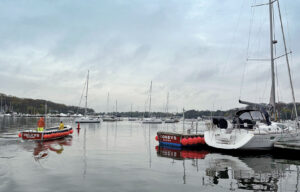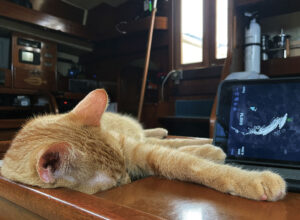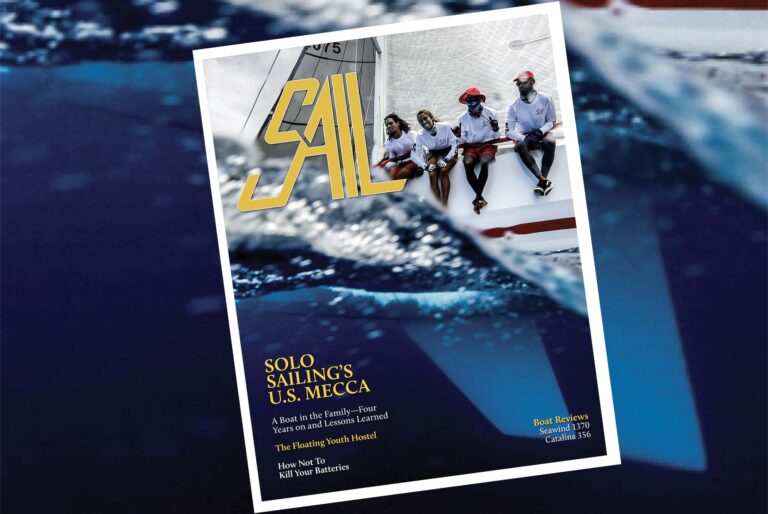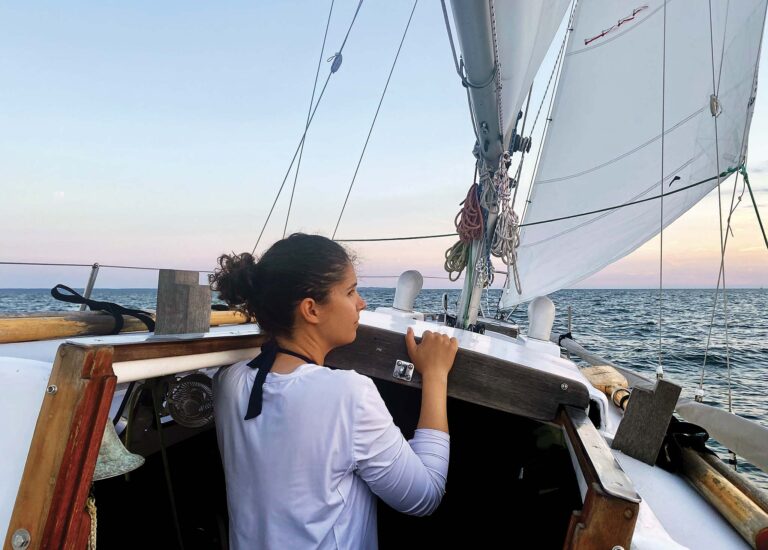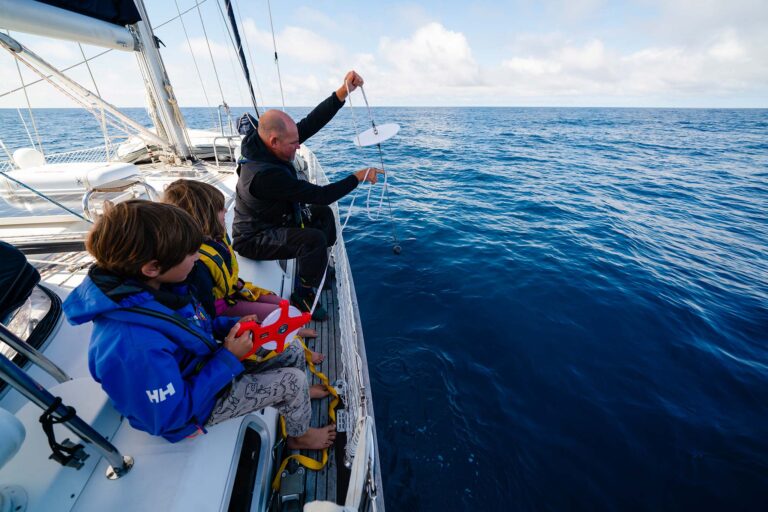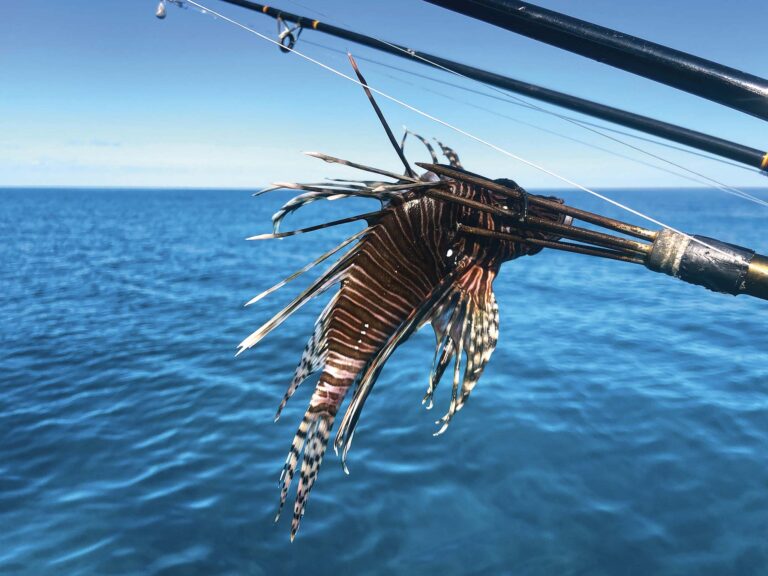When you hear celebrities and boats mentioned in the same sentence these days, it usually involves some movie star vacationing on a megayacht in St. Barths or sitting at anchor during the Cannes Film Festival, lazing about with a cavalcade of beautiful people. Or maybe we hear about a billionaire grabbing headlines in yachting publications by getting onto a “largest boats in the world” list or bankrolling a high-end racing team (looking at you Paul Allen and Larry Ellison). But not too long ago celebrities and boats went hand in hand because, like the rest of us, the stars simply loved to go out for a sail. Here we take a look back at some of Hollywood’s finest who hoisted the main and headed out to sea.
The Great Pirate
Errol Flynn was as well known for his swashbuckling roles in pirate movies like Captain Blood, The Sea Hawk, Against All Flags and The Master of Ballantrae as he was for his real-life swashbuckling ways. An avid sailor and owner of multiple boats, Flynn had a penchant for rum and carousing aboard with all sorts of female companions. Born in Tasmania (though Jack Warner and the studio execs of the time told the public he was Irish), Flynn grew up around Hobart and Sydney harbors, going on sailing excursions that sparked a lifelong love of the sea.
In 1937 he published Beam Ends, a book recounting a seven-month sailing trip from Sydney to New Guinea with three friends aboard his first boat, Sirocco. “The Sirocco was a long, slender splinter of a boat, and over 50 years old when, in a moment of aberration, I bought her, and with three companions proposed to sail out of Sydney Harbor to the South Seas,” he wrote. “Forty-four feet at the water line, cutter rigged, she was never intended to sail outside the smooth waters of the harbor. After seven months we got there, surprising ourselves more than anyone, for the only truly remarkable thing about our seamanship was our appalling lack of it. If I took a sextant and ‘shot the sun,’ my calculation of our position would, as often as not, locate the ship anywhere from the South Pole to the middle of the Sahara Desert.”
How Flynn got his hands on the first Sirocco is up for debate. One story claims the boat was purchased for him by his mother. Another holds that she was bought for him by his father, and Flynn himself claimed he won her in a rum-fueled card game. His second Sirocco—which despite sailing superstition he named simply Sirocco, and not Sirocco II—was a 75ft ketch built by John Alden and launched in 1929. Flynn took possession of her in 1938.
His final boat was the 118ft schooner Zaca, built in 1930 by the Nunes Brothers Boat and Ways Co. in Sausalito, California. After serving as an auxiliary plane-guard ship standing ready to rescue the crews of any planes downed nearby in San Francisco Bay during World War II, she was consigned to civilian life and picked up by Flynn in 1946. In conjunction with the Scripps Institute of Oceanography, Flynn, his father (a professor of biology at the University of Tasmania), and a number of other marine biologists and friends took part in a research cruise, with Zaca playing host. Together they sailed from California to the east coast of Mexico and on into the Caribbean and West Indies, studying marine life along the way. Flynn produced a short film about the trip, titled Cruise of the Zaca.
Part one:
https://www.youtube.com/watch?v=AR1fDw8gZZc
Unfortunately, in later life Flynn became in many ways a parody of the characters he portrayed on the silver screen in his heyday. He lived aboard Zaca, sailing the Western Mediterranean, drinking heavily and squandering his fortune on various failed investments. In 1959, broke and ruined by drink, Flynn went to Vancouver, British Columbia, to renegotiate the lease of Zaca, and while there suffered a fatal heart attack. (The doctors noted he was also suffering badly from cirrhosis of the liver.)
In his autobiography, My Wicked, Wicked Ways, Flynn wrote, “The only real wives I have ever had have been my sailing ships.”
Bogie and Bacall
In terms of Hollywood power couples over the years, Humphrey Bogart and Lauren Bacall certainly hold a prominent place on the list. And given Bogart’s passion for sailing and the sea, it is only fitting that the two met on the set of the 1944 adaptation of Ernest Hemingway’s To Have and Have Not. At the time, Bogart was one of the biggest film stars in the world, coming off starring roles in The Maltese Falcon (1941) and Casablanca (1942), while it was Bacall’s first go at movies. She was nervous, he cracked jokes to calm her down, and the rest is history.
After their marriage in 1945, Bogart bought a 55ft schooner named Santana from fellow actor Dick Powell and combined his two true passions—his beautiful bride and sailing. In his book, Bogart: In Search of my Father, the actor’s son Stephen talked of his father’s two loves. “While most people know that Bogie and Bacall had a great love affair, probably fewer know about my father’s other great love—sailing,” Stephen wrote. “The sea was my father’s sanctuary”
Bogart didn’t love his boat just for the occasional cruise around California’s Newport Harbor or as a place to have drinks and smoke cigarettes with the boys in peace—though that certainly did happen. He also raced her, and the boat’s galley is still adorned with commemorative plaques from the 1950 and 1951 San Clemente Island races and the 1953 Voyagers Yacht Club Channel Islands Race. For more on Bogart’s love of sailing, we would recommend Sailing With Bogie: A Memoir of Humphrey Bogart’s Passion for the Sea, by Larry Dudley, who raced alongside the great actor.
Late Night Sailing
When Stephen Colbert was growing up in Charleston, South Carolina, all he wanted to do was sail. He grew up on the harbor, he saw the boats go by, he wanted in. But a damaged eardrum and a protective mother kept him off the water. So he moved on, did a stint on a little television program called The Daily Show, had his own show, The Colbert Report, and earlier this year took the reins from David Letterman as host of The Late Show.
Despite the rigors of his successful and demanding television career, Colbert has also, in recent years, managed to finally squeeze in a little sailing. In 2005, the Charleston native returned to his home waters and joined some friends aboard a 45ft ketch to compete in the Charleston Bermuda Race. Despite having to repair a ripped mainsail, the motor dying, having the heads clog, their watermaker quitting on them and the boat finishing dead last—in addition to making such a quick turnaround in Bermuda that Colbert could hardly even count it as a visit—he came back and competed in the race again in 2011, this time on a nicely appointed Farr 65.
In 2013, Colbert was appointed an honorary board member of the National Sailing Hall of Fame, alongside fellow celebrity Morgan Freeman, himself a sailor, who had taken the post over from the late Walter Conkite in 2009. “I’m honored to be named to the Honorary Advisory Board,” Colbert said. “I will do my best to not capsize the National Sailing Hall of Fame.”
Part Two:
https://www.youtube.com/watch?v=5lM60JV0ZtU
The Wanderer
While some famous people get into sailing after a successful career, it was the exact opposite for Sterling Hayden. Born and raised among the coastal towns of New England, Hayden dropped out of high school at the age of 16 and took a job on a schooner, sailing from New London, Connecticut, to Newport Beach, California. After that it seemed he was hooked, and the voyages continued—time spent fishing the Grand Banks off Newfoundland, running charters, working as a fireman on steamers bound for Cuba, going round the world on the schooner Yankee, skippering a square-rigger from Gloucester, Massachusetts, to Tahiti.
Hayden had a successful career in Hollywood (Paramount Pictures referred to him as “The Beautiful Viking God) and in between his time in the Marines during World War II—in which was also successful, being awarded the Silver Star for gallantry—he starred in a plethora of films, including such classics at The Godfather and Dr. Strangelove or: How I Learned to Stop Worrying and Love the Bomb.
Despite his success, he often said he didn’t really care for acting, and only did it to fund his boats and sailing adventures. He left Hollywood at what was arguably the height of his career, and in 1958, after a bitter divorce in which he was granted custody of his four children, he loaded up his family aboard the schooner, Wanderer, and set sail for Tahiti. He recounts his life and his adventures in his autobiography, aptly titled Wanderer.
Sailing’s Gangster
One of Hollywood’s earliest shining stars, James Cagney was a bit of an anomaly—the hard-nosed tough-guy gangster in movies like 1931’s The Public Enemy and 1938’s Angels with Dirty Faces (in the latter, he starred alongside Humphrey Bogart), Cagney got his start in show business as a song and dance man, dancing dressed in drag in the chorus line production Every Sailor, and later (this time as a man) in the musical Pitter Patter.
He was also a celebrity who hated “celebrity.”
Cagney was born in Manhattan, but an early trip to the countryside led him to long for the quiet life. Once he had made a name for himself and was earning a substantial living, the actor bought a 100-acre farm on Martha’s Vineyard in 1936. In his memoir, Cagney on Cagney, he wrote that he loved his Vineyard farm “beyond words,” and that “the taxes were thirty-nine dollars a year, which made it an ideal place to land if the movie business ever dropped me.”
Two years earlier, he had purchased the 68ft schooner Martha, built in 1907 for then San Francisco Yacht Club commodore J.R. Hanify. Cagney brought the boat to the Vineyard, where he and his friends would sail and relax. Later, he sailed Mary Ann, a 43ft Chesapeake Bay bugeye ketch that he kept at a pier on Lake Tashmoo. Denny Wortman, a Vineyard Haven resident who grew up with the Cagney family and who served as the skipper aboard Mary Ann for three summers, told Martha’s Vineyard Magazine a sailing story during which Cagney, never one for the crowds, tried to avoid a fellow celebrity. Denny recalled that one day they were heading out of Tashmoo for a sail. “Frank Sinatra was in town,” Denny said. “He’d chartered a 100ft yacht, the island was going crazy, and he kept trying to get in touch with Jimmy. When I asked Jimmy where he wanted to go, his answer was succinct: ‘Wherever Frank isn’t.’”
Wooden Ship
While not a Hollywood heavy hitter like the rest of the folks mentioned here, Neil Young’s passion for cruising still deserves mention. Listening to the music of Neil Young, along with that of Young and his bandmates Crosby, Stills and Nash, it should come as no surprise that the man feels the pull of the sea. Hell, one of their first hits was called “Wooden Ships.” And while bandmate David Crosby is also a sailor (the song “Southern Cross” was written in Ft. Lauderdale aboard his 59ft Alden schooner Mayan) it was Young’s boat that really caught our eye. At a time when many rock stars were buying high end yachts and go-fast boats, Young decided to take a different tack and purchased a big, burly 101ft Baltic trading schooner built in 1913.
She was a little worse for wear after years of use, and Young refurbished her, sparing no expense—he had a railroad car filled with 20,000 board feet of mahogany brought in to re-plank her—and named her the W.N. Ragland after his grandfather. The boat is fitting for a man who seems more at ease on the edge of the Canadian wilderness in a cabin than in a suite at the Chateau Marmont—she’s more pirate ship than yacht, with natural wood all over, a piano below and a wood-burning stove. Young sailed and cared for the W.N. Ragland for 35 years before he put her up for sale in 2011.



